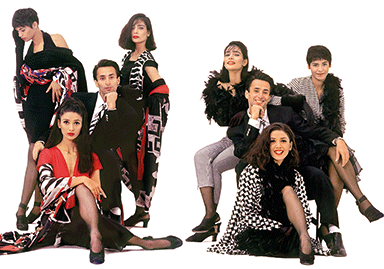The evolution of Indian fashion is linked as much to the country’s rising income levels that makes spending on non-essentials such as designer clothing an imperative, as a means to announce to the world that you have arrived if you are togged up in designer finery.
However, linked to it is also the future of India’s vibrant handloom and weaving industries. If you trace the history of Indian fashion you trace the evolution of the nation’s traditional textiles and its use of embroidery and embellishments in innovative ways.
We spoke to a range of experts to look at how the industry has grown since 1947.
SILK ACT
In March 1945, the British government ruling India tasked a panel headed by Navaratna Rama Rao, the man credited with establishing the buzzing silk industry in Mysore, to suggest ways to deal with India’s sprawling silk industry.
The panel suggested setting up a government-supported body to develop the silk industry, points out designer Deepika Govind. “In 1948, independent India accepted the recommendations and enacted the Central Silk Board Act. The Central Silk Board came into existence in April 1949. After the re-organisation of states in 1956, the sericultural areas of Kollegal, which were under the Madras presidency, merged with Mysore state and the sericultural activity of the Mysore state, the only state at that time to have a vibrant silk industry, increased enormously.”
Last August, the Chairman of Central Silk Board, K. M. Hanumantharayappa, called for the centre to revisit the act and take into consideration modern problems facing silk weavers.
HANDLOOM ACT
In 1950, when India became a republic, the government declared that manufacturing several products were the privilege of the handloom sector. Among these were items such as dhotis, border saris and bedsheets, says Fashion Design Council of India chief Sunil Sethi. “Many committees were formed to look into the problems of the handloom industry, and their recommendations led to the Handloom Reservation Act, 1985 (HRA).”
More recent legislation has led to the creation of handloom marks, the Geographical Indicator Act and the All India Handloom Brand. Powerlooms now want the HRA repealed, but given handlooms’ unique status, experts have asked for a powerloom mark to be established instead.
BOUTIQUE DEBUTS
Textiles have been a mainstay of government policy since 1947, but fashion — and readymade garments — only came into the spotlight with the work of designer Ritu Kumar, who opened her first boutique in Delhi in 1966. Until then, you went to your neighbouring tailor or bought saris from a sari shop.
“She upped the ante for by integrating embroideries and Indian textiles into both traditional and Indo-Western silhouettes,” says Sethi. “In 1973, she embellished her garments with zardozi embroidery, which can be traced back to Mughal royalty, thus introducing this regal art form to mainstream Indian fashion.”
Kumar has also dressed several celebrities, notably Diana, Princess of Wales.
Fashion flourished in the 1980s, led by designer Rohit Khosla, who co-founded the multi-label retailer Ensemble with Tarun and Sal Tahiliani.
“The contemporary Indian fashion industry story starts with Rohit Khosla, whose intangible legacy continues to impact Indian fashion 22 years later,” says designer Manish Arora. “Ensemble has nurtured several young talents and showcased some of the best talent in the Indian fashion industry.”
FASHION SCHOOL
Few can deny the colossal impact of the National Institute of Fashion Technology (NIFT), set up in 1986 under the aegis of the Ministry of Textiles. The NIFT Act came into force in 2006 and conferred statutory status on NIFT. The institute has been pivotal in promoting and developing education and research in fashion and related areas, says designer Sabyasachi Mukherjee. NIFT now ranks in the top 100 institutes for fashion education globally.
“It changed the mom-and-pop culture of Indian fashion to a professionally managed system,” says Mukherjee. “A lot of senior designers have taken over as chief executives of companies.”
TEXTILE POLICY
The first National Textile Policy was implemented in 2000, five years after India signed the WTO’s Agreement on Textiles and Clothing.
The agreement sought to energise the Indian textile sector so it could compete in the global market, says Rta Kapur Chishti, researcher, design developer, and author of Saris of India. “It helped lay down a policy framework for artisans, weavers and embroiders on whom India’s fashion, textiles and crafts industry is dependent. It also gave weavers access to a wider market,” she says.
FASHION WEEKS
Nothing changed the business of Indian fashion more than the two fashion weeks, Lakme Fashion Week in Mumbai and Amazon India Fashion Week in New Delhi. They have since engendered several clones, including FDCI’s India Couture Week, says designer Tarun Tahiliani.
“LFW was the first off the ground (1999) and helped get the industry together. The India Fashion Week came in a year later, and between the two they offered designers from across India a platform to showcase their two annual collections, interact with buyers and create an impact,” he adds.






